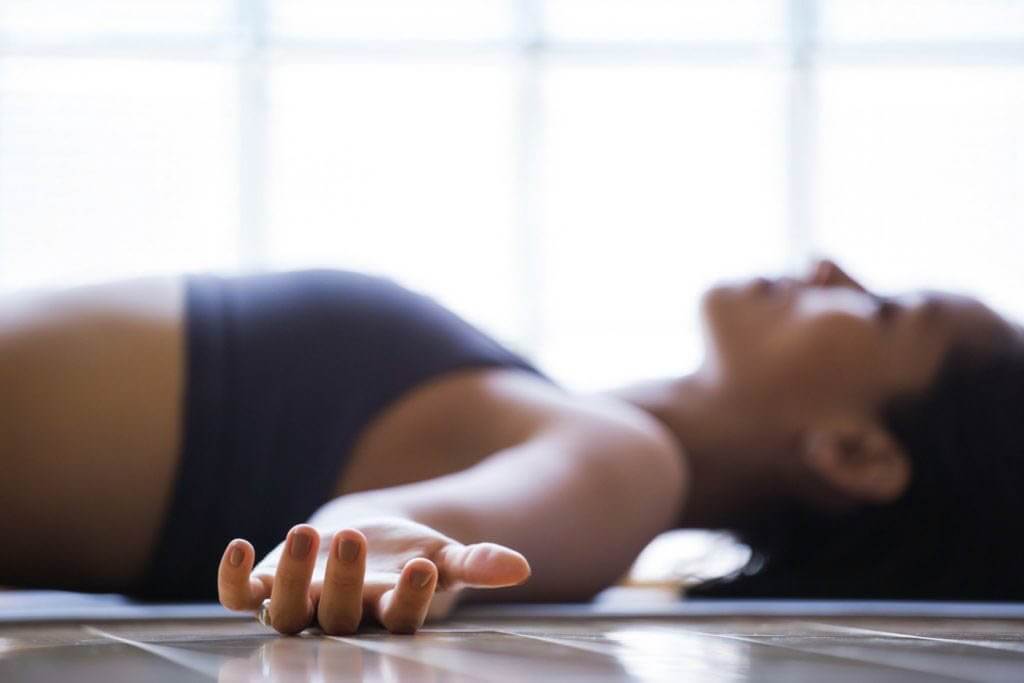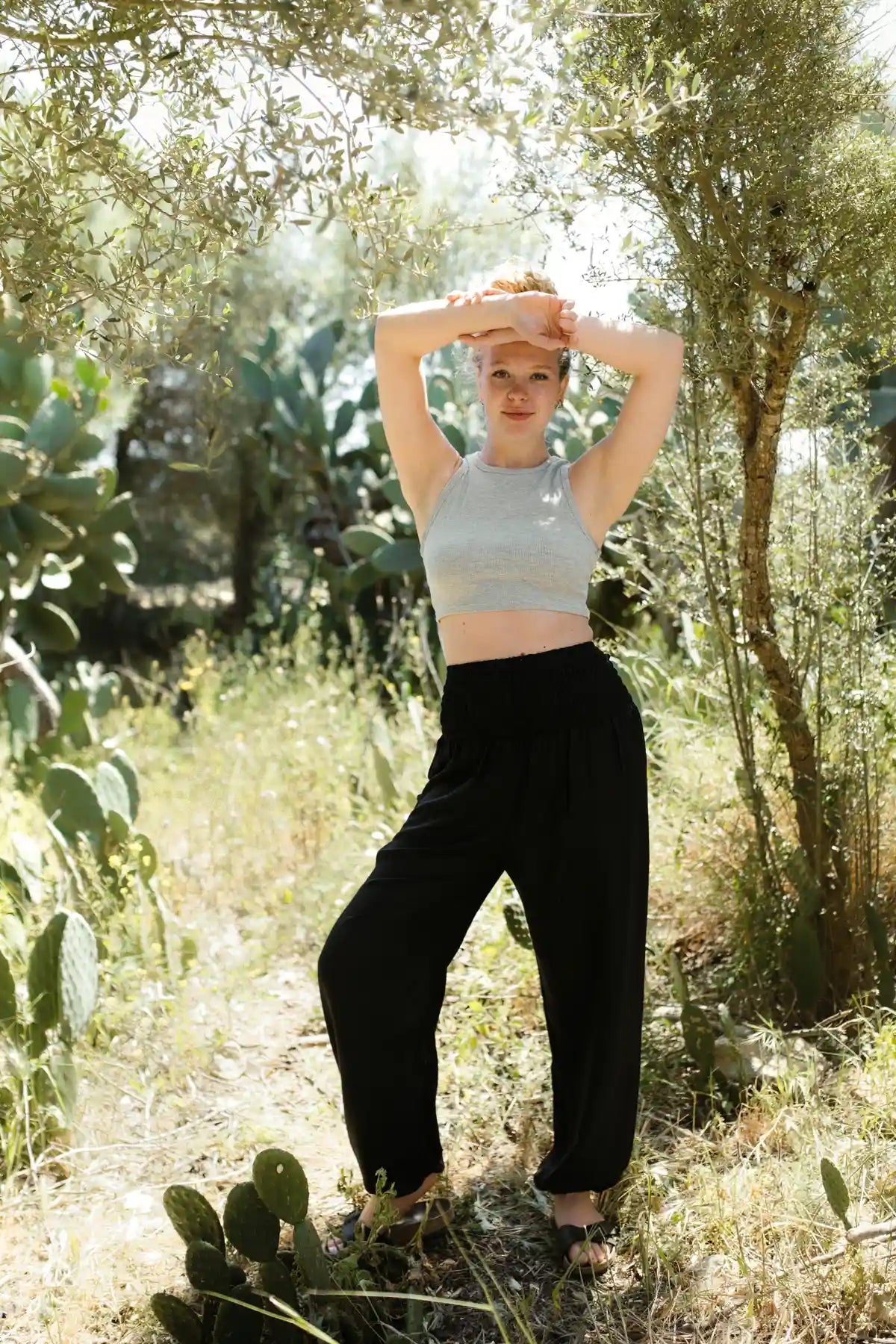
Inhaltsverzeichnis
Die Atemmeditation – Meditationstechniken für Neulinge
Bevor ich dir die Atemmeditation vorstelle, möchte ich zu Beginn kurz darauf eingehen, was Meditation ist.
Meditation ist eine Achtsamkeitstechnik, mit der man lernen kann, seinen Fokus zu lenken und die eigene Aufmerksamkeit bewusst auszurichten. Die positiven Effekte von Meditation auf die Gesundheit und das allgemeine Glücksempfinden sind mittlerweile durch zahlreiche Studien belegt worden. Dabei stellen die Reduktion von Stress, ein vermehrtes Empfinden von innerer Ruhe und eine bessere Konzentrationsfähigkeit nur einige der zahlreichen Effekte von Meditation dar. Sie hilft einem auch dabei, sich selbst besser kennenzulernen. Man wird sich bewusst darüber, was man denkt und fühlt und woher diese Gefühle und Gedanken kommen.
Wenn man Meditation kennenlernen und für sich selbst ausprobieren möchte, kann es einem durchaus schwer fallen zu entscheiden, wie man am besten anfängt. In diesem Blogpost gebe ich dir einige grundlegende Informationen und Tipps zum Meditieren an die Hand. Heute wollen wir die wohl grundlegendste Form der Meditation kennenlernen: Die Atemmeditation.
Atmen? Tu ich doch ohnehin schon die ganze Zeit
Natürlich Atmen wir rund um die Uhr, doch nur ganz selten sind wir uns dabei darüber bewusst, wie schnell, wie lange und wie genau wir Ein- und Ausatmen. Unser Atem kann uns aber eine ganze Menge darüber verraten, wie wir uns gerade fühlen. Bei der Atemmeditation geht es nun nicht unbedingt darum, seinen Atem zu analysieren, sondern darum zu lernen, sich zu fokussieren und zur Ruhe zu kommen. Das fällt einem nämlich anfangs häufig schwer, einfach weil man es nicht gewohnt ist.
Wie genau hilft mir mein Atem beim Entspannen?
Der Großteil unserer Sorgen und Zweifel entsteht dadurch, dass wir uns mit unserer Aufmerksamkeit nicht in der Gegenwart, sondern entweder in der Zukunft oder in der Vergangenheit befinden. Unser Atem hilft uns blitzschnell dabei, uns wieder zurück in den Moment zu bringen und unsere Aufmerksamkeit wirklich auf das zu lenken, auf das wir uns konzentrieren möchten. Wenn wir uns auf eine immer wiederkehrende Sache fokussieren, die außerdem für uns nicht anstrengend ist, können wir einfacher Umgebungsreize ausblenden und uns entspannen.
Die Atemmeditation lässt sich sehr schön und einfach in den Alltag integrieren, weil man sie immer und überall praktizieren kann. Wenige Minuten des reinen Meditierens reichen zu Beginn völlig aus, denn Meditation ist auch Übungssache. Das schöne an dieser (und an eigentlich jeder) Meditation ist, dass sie sich zeitlich beliebig lang ausdehnen lässt.
Mir ist wichtig zu erwähnen, dass es bei der Atemmeditation nicht darum geht, den eigenen Atem zu kontrollieren oder zu verändern. Zu Beginn der Meditation atmet man meist einige Male tief ein und wieder aus, danach atmet man aber ganz normal im eigenen Tempo weiter. Mir ist es anfangs wirklich schwer gefallen, meinen Atem nicht automatisch verändern zu wollen. Erst nach ein paar Malen konnte ich dann vollkommen “loslassen”. Wenn es dir also ähnlich geht, ist das überhaupt nicht schlimm!
Ready? Dann lass uns mit der Atemmeditation loslegen
- Finde für die Meditation einen bequemen Sitz. Du kannst dich im Schneidersitz auf den Boden oder auf ein Kissen setzen, oder du machst es dir aber auf einem Stuhl gemütlich.
- Wenn du auf einem Stuhl sitzt, stelle beide Füße parallel auf dem Boden auf, lege deine Hände locker auf den Oberschenkeln ab und richte deinen Rücken auf. Dabei musst du den Rücken nicht durchdrücken; du solltest jedoch auch nicht zu gekrümmt dasitzen. Richte ihn soweit auf, dass es sich für dich immer noch angenehm anfühlt.
- Wenn du bereit bist, schließe deine Augen. Atme hier zwei- bis dreimal tief ein und wieder aus. Komme im Moment an und lass dann deinen Atem seinen natürlichen Rhythmus wiederfinden. Du brauchst deinen Atem in keiner Weise kontrollieren oder verändern. Nimm einfach wahr, was gerade ist. Es geht nicht darum, einen bestimmten Zustand zu erreichen. Lass deine Erfahrungen einfach deine Erfahrungen sein, so gut es geht, ohne dabei zu erwarten, dass etwas anders sein sollte, als es ist.
- Richte deine Aufmerksamkeit auf deine Nasenspitze. Vielleicht bemerkst du, wie die Luft an deinen Nasenflügeln beim Ausatmen etwas wärmer ist als beim Einatmen. Wenn es dir schwerfällt, dich auf deine Nase zu fokussieren, dann kannst du deine Aufmerksamkeit auch auf deinen Brust- oder Bauchraum lenken und hier beobachten, wie sich dein Bauch beim Einatmen hebt und beim Ausatmen senkt. Wenn du diese Übung zum ersten Mal machst kann es hilfreich sein, eine Hand auf den Bauch zu legen und die Aufmerksamkeit dort auf die sich verändernden Empfindungen zu richten, wo deine Hand diesen Bereich berührt.
- Beobachte nun ein paar Minuten deinen Atem und wie er in deinen Körper ein- und wieder ausfließt. Unter Umständen fällt dir dabei die kleine Pause zwischen zwei Atemzügen auf sowie die zwischen dem Einatmen und dem Ausatmen.
- Schnell wirst du merken, dass deine Aufmerksamkeit abschweift und sich Gedanken, Plänen oder Tagträumen zuwendet. Das ist vollkommen normal. Sobald du merkst, dass sich deine Aufmerksamkeit nicht mehr beim Atem befindet, beobachte, wohin dein Geist abgeschweift ist und dass dort ein Gedanke war. Lenke dann deine Aufmerksamkeit liebevoll zu deinem Atem bzw. zu deinem Anker – der Nase oder dem Bauch – zurück.
- Setze diese Übung eine Weile fort und erinnere dich von Zeit zu Zeit daran, dass die Absicht lediglich darin besteht, sich einfach nur seiner Erfahrungen im jeweiligen Augenblick bewusst zu werden, so gut es geht. Dein Atem dient dir dabei als Anker, mit dem du immer wieder eine Verbindung zum Hier und Jetzt herstellen kannst.
- Nimm jetzt noch einen tiefen Atemzug. Wenn du soweit bist, öffne deine Augen und strecke dich ein wenig.
Wenn dir die Meditation gefallen hat, kannst du sie natürlich so oft wie du magst wiederholen. Das muss nicht immer zu einem festen Tageszeitpunkt geschehen; in stressigen Situationen oder auch einfach mal so zwischendurch kann eine Miniversion der Atemmeditation – ein paar Mal tief durchatmen – Wunder wirken!
In meinem nächsten Achtsamkeits-Blogpost stelle ich dir die Bodyscan-Meditation vor. Bis nächste Woche!
Wenn du noch mehr über gesunde Ernährung, Achtsamkeit, Nachhaltigkeit oder Familie und Schwangerschaft erfahren möchtest, schaue dir hier noch mehr spannende Blog-Artikel zu diesen Themen an.

Photo by Loe Moshkovska from Pexels



























Leave a comment
This site is protected by hCaptcha and the hCaptcha Privacy Policy and Terms of Service apply.